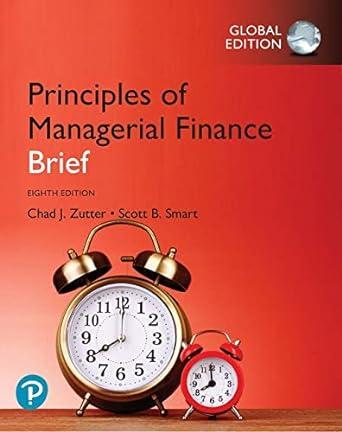on- 2. A company is considering on investing one of the following alternatives. 1 50%. Suppose that no tax is paid if the taxable income switching between depreciation methods is allowed. Given that is 10% and no budget limit exists, determine which alternative, if any, shou A B First Cost ($) -30,000 Annual Revenues ($) 30,000 Annual Expenses (8) 5,000 Depreciation Method Double Declining Balance Recovery period 5 Salvage Value (8) 10,000 -60.000 35.000 5.000 Straight Line 10 5,000 (a) if the alternatives are independent? (b) if the alternatives are mutually exclusive? 3. For the cash flows below, use an annual worth comparison to determine which alternative is best at an interest rate of 2% per month. First cost () M&O cost ($/month) Overhaul every 10 years (S) Salvage value (8) Life (years) B C -90,000 -400,000 -900,000 -30.000 -20.000 -13,000 -80,000 7.000 25.000 200.000 6 2. A company is considering on investing one of the following alternatives. The tax rate is 50%. Suppose that no tax is paid if the taxable income is non-positive and switching between depreciation methods is allowed. Given that after-tax MARR is 10% and no budget limit exists, determine which alternative, if any, should be selected. B A First Cost (8) -30,000 Annual Revenues ($) 30.000 Annual Expenses (8) 5.000 Depreciation Method Double Declining Balance Recovery period Salvage Value (S) 10.000 -60,000 35.000 5,000 Straight Line 10 5.000 (a) if the alternatives are independent? (b) if the alternatives are mutually exclusive 2. A company is considering on investing one of the following alternatives. The tax rate is 50%. Suppose that no tax is paid if the taxable income is non-positive and switching between depreciation methods is allowed. Given that after-tax MARR is 10% and no budget limit exists, determine which alternative, if any, should be selected. A First Cost (8) -30,000 Annual Revenues ($) 30,000 Annual Expenses (8) 5,000 Depreciation Method Double Declining Balance Recovery period 5 Salvage Value (8) 10,000 -60,000 35,000 5,000 Straight Line 10 5,000 (a) if the alternatives are independent? (b) if the alternatives are mutually exclusive? on- 2. A company is considering on investing one of the following alternatives. 1 50%. Suppose that no tax is paid if the taxable income switching between depreciation methods is allowed. Given that is 10% and no budget limit exists, determine which alternative, if any, shou A B First Cost ($) -30,000 Annual Revenues ($) 30,000 Annual Expenses (8) 5,000 Depreciation Method Double Declining Balance Recovery period 5 Salvage Value (8) 10,000 -60.000 35.000 5.000 Straight Line 10 5,000 (a) if the alternatives are independent? (b) if the alternatives are mutually exclusive? 3. For the cash flows below, use an annual worth comparison to determine which alternative is best at an interest rate of 2% per month. First cost () M&O cost ($/month) Overhaul every 10 years (S) Salvage value (8) Life (years) B C -90,000 -400,000 -900,000 -30.000 -20.000 -13,000 -80,000 7.000 25.000 200.000 6 2. A company is considering on investing one of the following alternatives. The tax rate is 50%. Suppose that no tax is paid if the taxable income is non-positive and switching between depreciation methods is allowed. Given that after-tax MARR is 10% and no budget limit exists, determine which alternative, if any, should be selected. B A First Cost (8) -30,000 Annual Revenues ($) 30.000 Annual Expenses (8) 5.000 Depreciation Method Double Declining Balance Recovery period Salvage Value (S) 10.000 -60,000 35.000 5,000 Straight Line 10 5.000 (a) if the alternatives are independent? (b) if the alternatives are mutually exclusive 2. A company is considering on investing one of the following alternatives. The tax rate is 50%. Suppose that no tax is paid if the taxable income is non-positive and switching between depreciation methods is allowed. Given that after-tax MARR is 10% and no budget limit exists, determine which alternative, if any, should be selected. A First Cost (8) -30,000 Annual Revenues ($) 30,000 Annual Expenses (8) 5,000 Depreciation Method Double Declining Balance Recovery period 5 Salvage Value (8) 10,000 -60,000 35,000 5,000 Straight Line 10 5,000 (a) if the alternatives are independent? (b) if the alternatives are mutually exclusive










